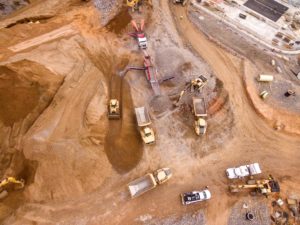 We’re seeing changes in the heavy machinery manufacturing industry that point to a more efficient, customer-centric future. With trends such as telematics, battery and hybrid power, automation, and sustainable manufacturing practices on the horizon, the world of heavy machinery is undergoing a change that promises to revolutionize how this industry functions in the future.
We’re seeing changes in the heavy machinery manufacturing industry that point to a more efficient, customer-centric future. With trends such as telematics, battery and hybrid power, automation, and sustainable manufacturing practices on the horizon, the world of heavy machinery is undergoing a change that promises to revolutionize how this industry functions in the future.
The heavy machinery industry is predicted to move towards a solution-oriented model, using technology that leverages connectivity and data to increase productivity and lower operating costs. Smaller original equipment manufacturers (OEM’s) will need to adapt and become more innovative which will narrow the gap between smaller and larger machinery producers This will ultimately result in a more competitive market and more viable options for the customer to choose from.
Top Trends in the Heavy Machinery Industry
We’ve seen some key trends emerging in the industry to date which are changing the way that the industry functions. These trends are introducing new options for customers in need of heavy machinery and have brought about significant improvements in terms of the operations, productivity, maintenance, and efficiency of the industry as a whole. Let’s take a closer look!
Products as a Solution
As we move forward as an industry, we can expect to see heavy equipment manufacturers gradually moving towards offering products as a comprehensive ownership solution.
Historically most OEM-deployed products have been stand-alone, or not ‘Internet of Things’ (IoT) enabled or connected. However, that’s changing. IoT in manufacturing is growing at a compound annual growth rate of 13.1% between 2017 and 2023, to reach a market size of $994 million. The inclusion of IoT features and sensors in heavy machinery equipment will make monitoring and tracking significantly easier, simplifying and optimizing many functions for users.
By 2030, it’s predicted that sensor-equipped, IoT-connected products will be the norm. This will provide OEMs with the data and insights needed to optimize product reliability and uptime, and to deliver products as a comprehensive ownership solution for owners to maximize productivity and lower operating costs.
Adoption of Digital Technology
Along the same lines, we should expect to see more manufacturers beginning to utilize artificial intelligence (AI) to improve the operation and maintenance of their heavy equipment. Manufacturers are already implementing cloud technology to share data and monitor the machinery in real-time.
As it optimizes the overall function of the heavy machinery user experience, this technology will also undoubtedly accelerate the shift toward delivering products as a comprehensive solution. IoT connection, high bandwidth data, AI, and machine learning will all work to optimize productivity and product uptime to create a more efficient machine use than ever before.
Sustainable Manufacturing Practices
The world is moving towards sustainability, and the heavy machinery industry is no exception. As governments and consumers push for more environmentally friendly products and business practices, we can expect to see manufacturers realigning their operations to prioritize their designs towards reduction of waste, reuse of resources, and eco-friendly power options.
The industry has historically followed a linear way of thinking, placing emphasis on a “take, make, and dispose” approach. Making the shift to sustainability will take thought and effort, but it’s not without its rewards; studies have shown that adopting sustainable business practices in the heavy machinery industry can lead to both environmental and economic benefits!
How Will Manufacturers Adapt?
With all these trends emerging, how can the manufacturer adapt? Small manufacturers can become more powerful by utilizing the latest technologies and adopting a solution-oriented approach – but they’ll have to become knowledgeable in those new advancements to effectively employ them and train customers on their benefits and use. Machinery manufacturers of any size can remain profitable and relevant by working with distribution partners to offer enhanced aftermarket services.
Who knows what will be possibly in the future. The trends listed above are not fleeting; they will alter the industry long-term, so it’s best to adopt them early. Get ahead of the curve, rather than lagging behind!
If you’re in the market for future-forward heavy machinery and equipment, take a look at what we have at Amaco. Contact us to learn more about how you can take advantage of these new trends and technologies.
- 8 Questions To Ask When Buying Used Aggregate Equipment - June 16, 2025
- 5 Key Steps to Choosing the Right Curb Machine for Your Fleet - October 22, 2024
- 5 Tips for Purchasing Used Excavating Equipment in Ontario - September 26, 2024

